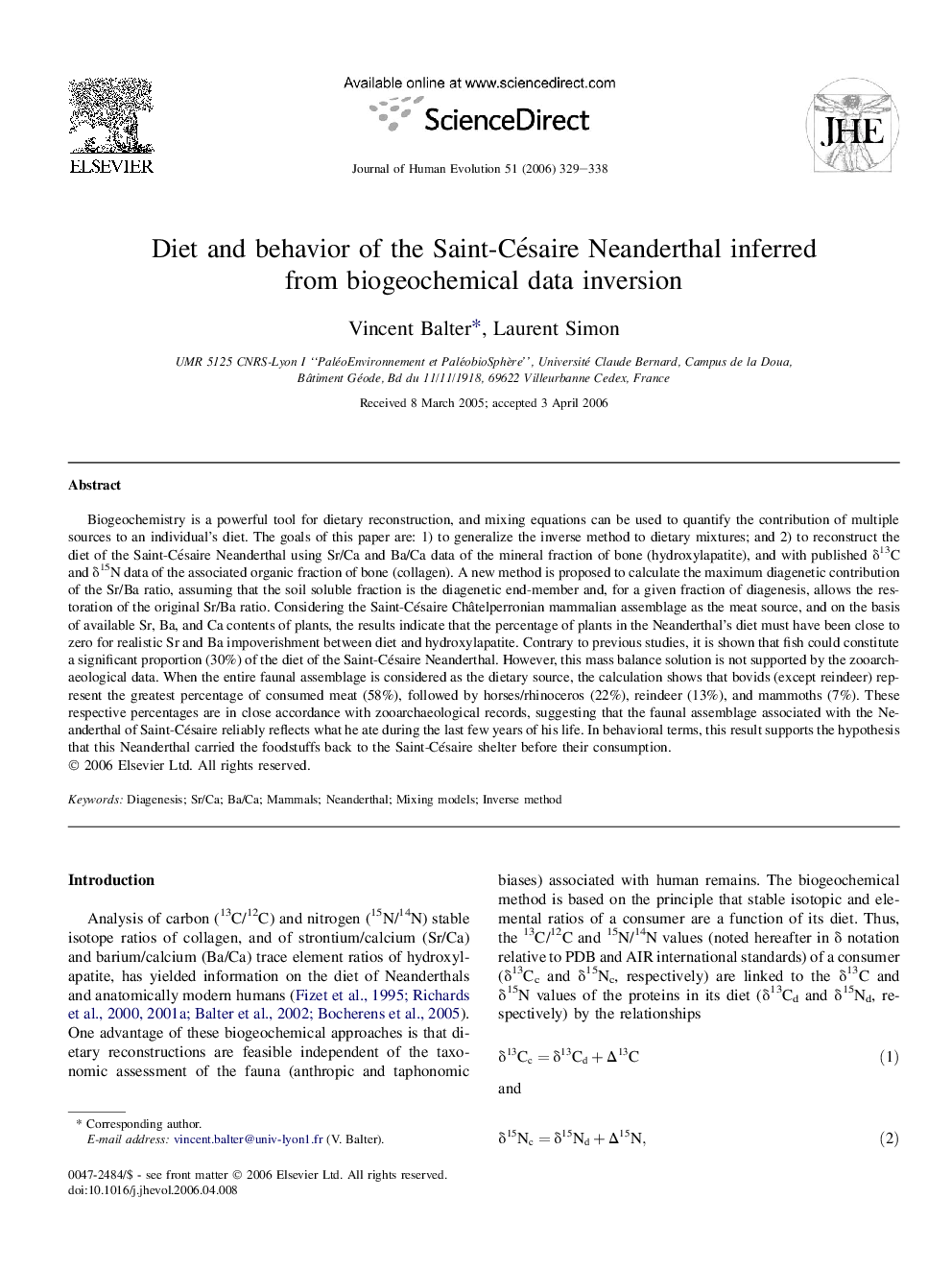| کد مقاله | کد نشریه | سال انتشار | مقاله انگلیسی | نسخه تمام متن |
|---|---|---|---|---|
| 4557106 | 1329527 | 2006 | 10 صفحه PDF | دانلود رایگان |

Biogeochemistry is a powerful tool for dietary reconstruction, and mixing equations can be used to quantify the contribution of multiple sources to an individual's diet. The goals of this paper are: 1) to generalize the inverse method to dietary mixtures; and 2) to reconstruct the diet of the Saint-Césaire Neanderthal using Sr/Ca and Ba/Ca data of the mineral fraction of bone (hydroxylapatite), and with published δ13C and δ15N data of the associated organic fraction of bone (collagen). A new method is proposed to calculate the maximum diagenetic contribution of the Sr/Ba ratio, assuming that the soil soluble fraction is the diagenetic end-member and, for a given fraction of diagenesis, allows the restoration of the original Sr/Ba ratio. Considering the Saint-Césaire Châtelperronian mammalian assemblage as the meat source, and on the basis of available Sr, Ba, and Ca contents of plants, the results indicate that the percentage of plants in the Neanderthal's diet must have been close to zero for realistic Sr and Ba impoverishment between diet and hydroxylapatite. Contrary to previous studies, it is shown that fish could constitute a significant proportion (30%) of the diet of the Saint-Césaire Neanderthal. However, this mass balance solution is not supported by the zooarchaeological data. When the entire faunal assemblage is considered as the dietary source, the calculation shows that bovids (except reindeer) represent the greatest percentage of consumed meat (58%), followed by horses/rhinoceros (22%), reindeer (13%), and mammoths (7%). These respective percentages are in close accordance with zooarchaeological records, suggesting that the faunal assemblage associated with the Neanderthal of Saint-Césaire reliably reflects what he ate during the last few years of his life. In behavioral terms, this result supports the hypothesis that this Neanderthal carried the foodstuffs back to the Saint-Césaire shelter before their consumption.
Journal: Journal of Human Evolution - Volume 51, Issue 4, October 2006, Pages 329–338